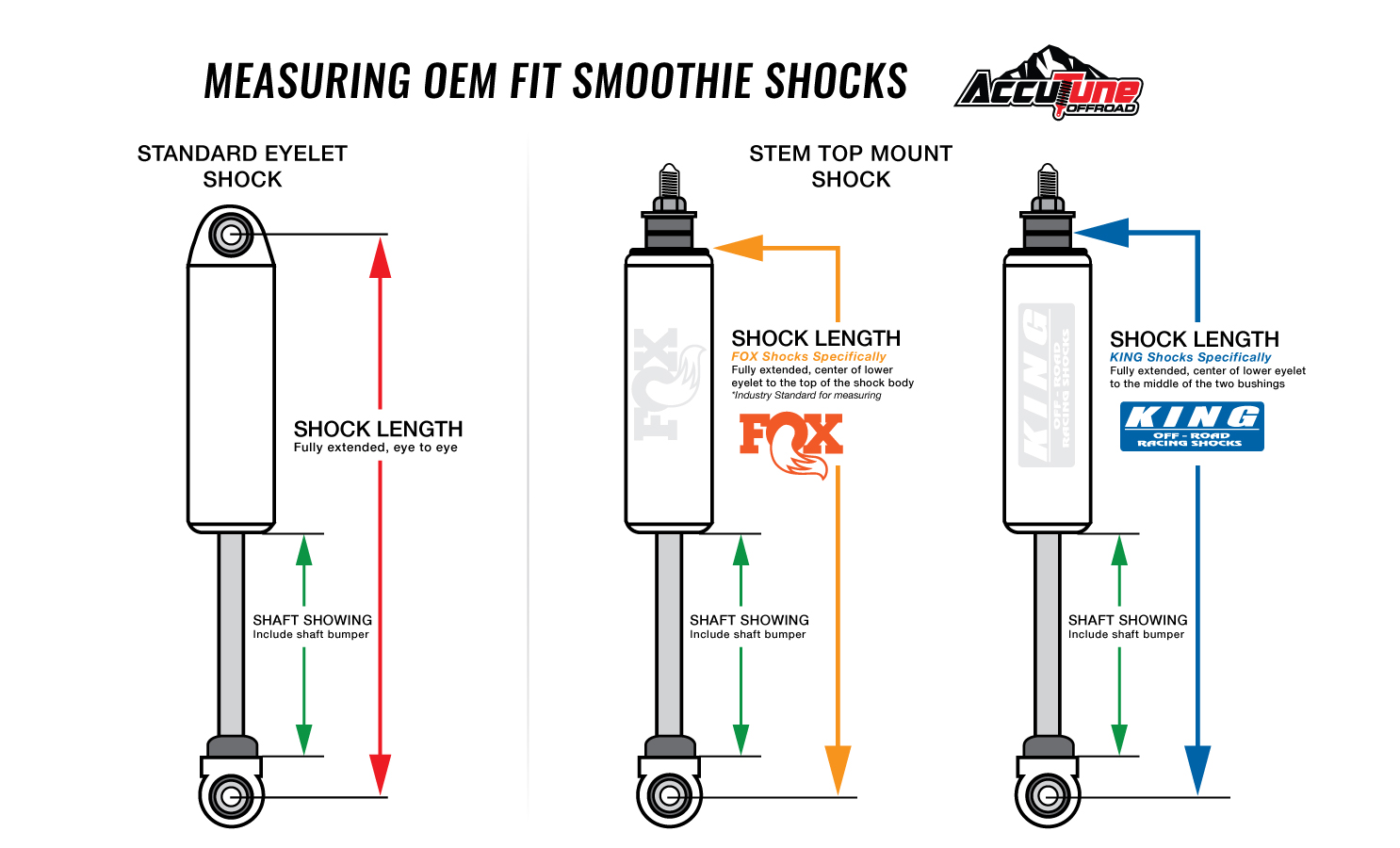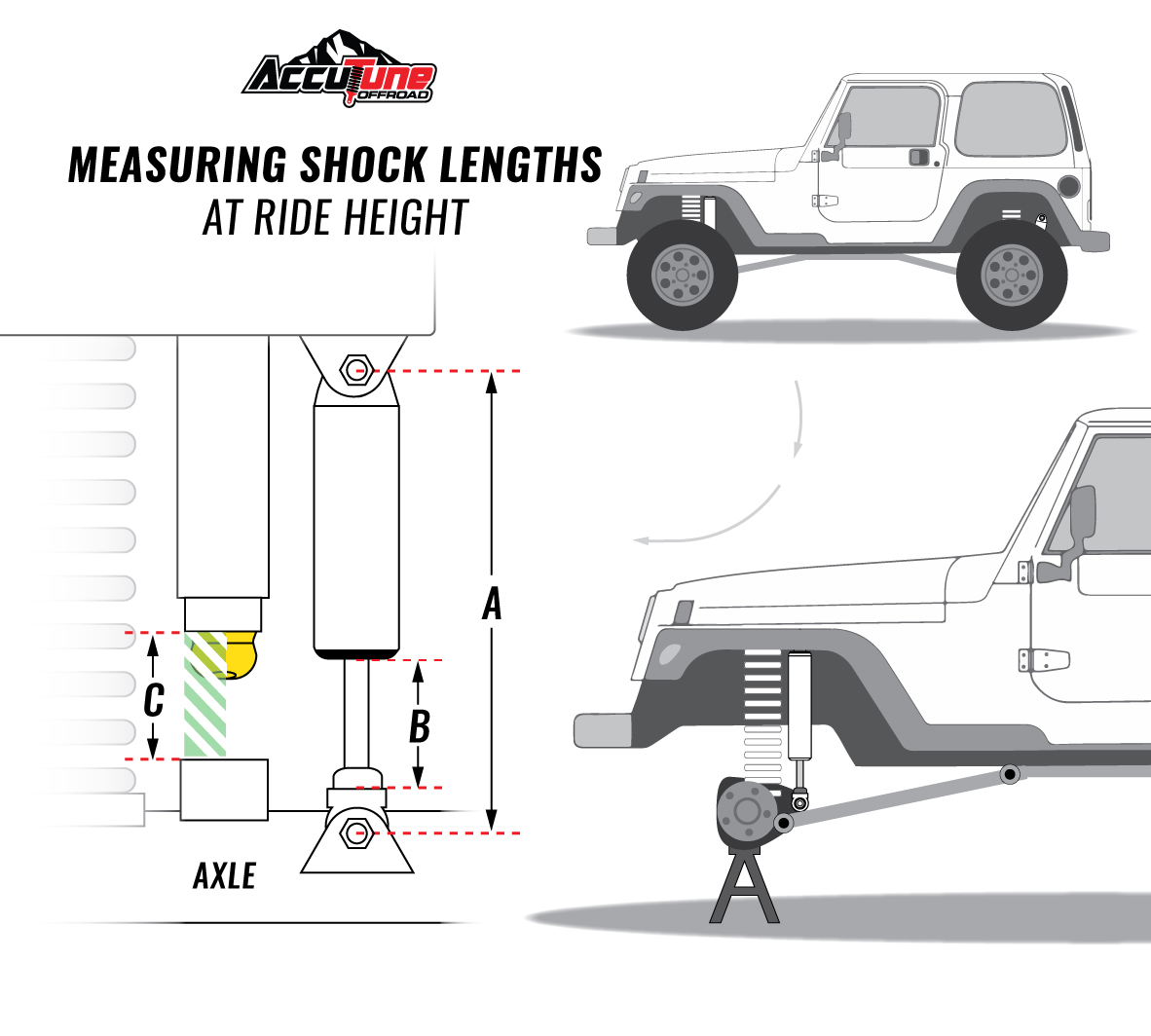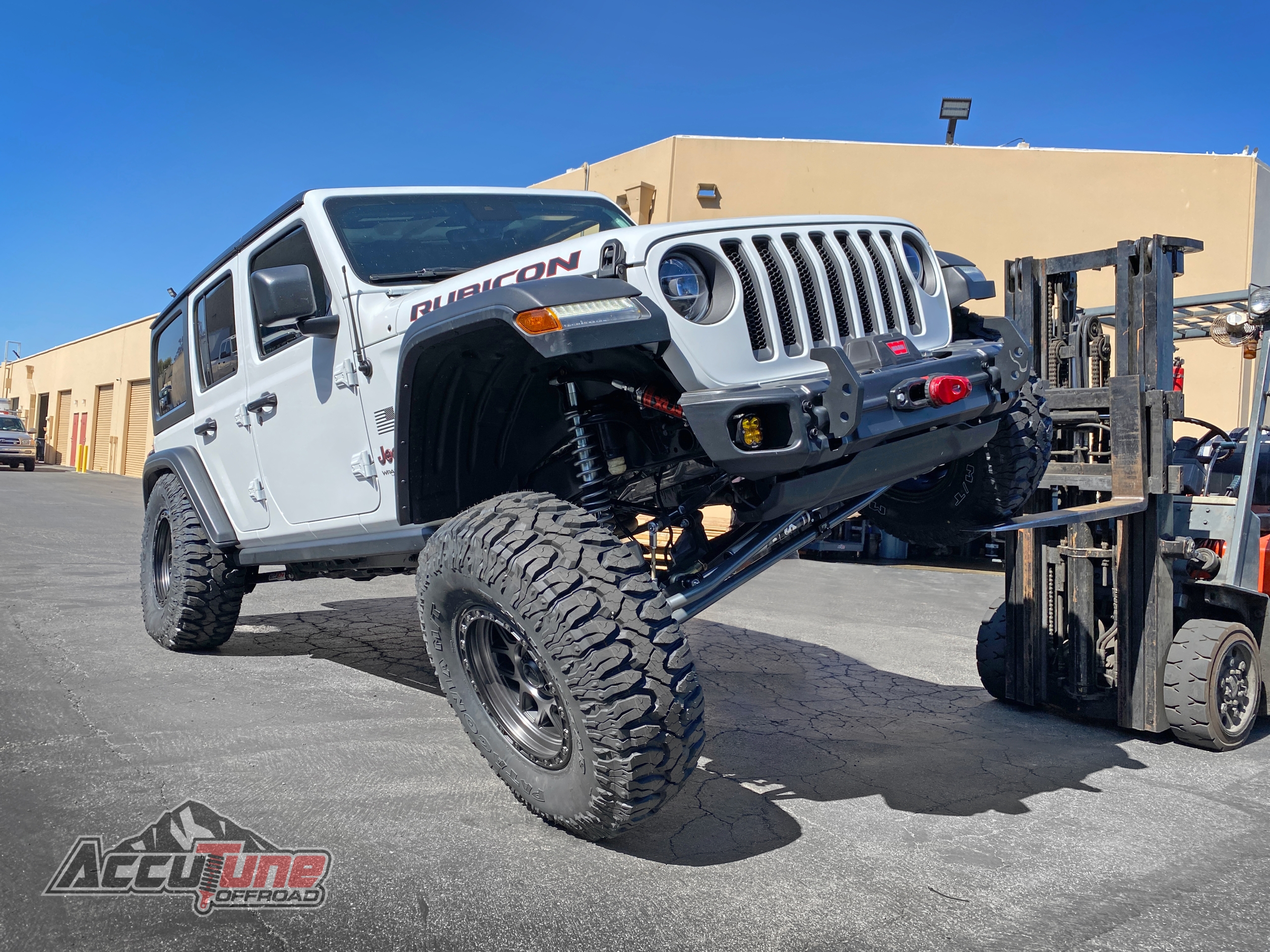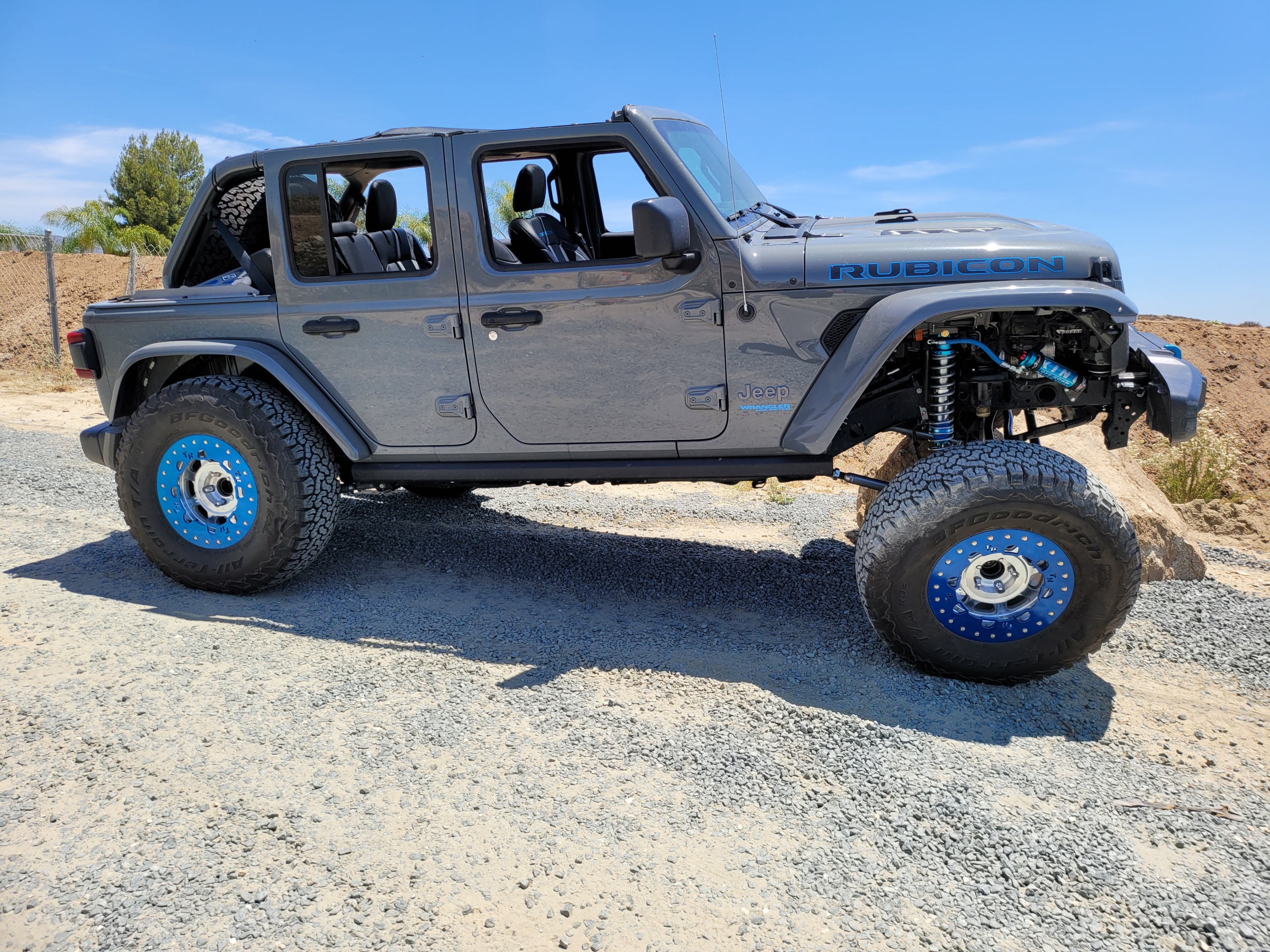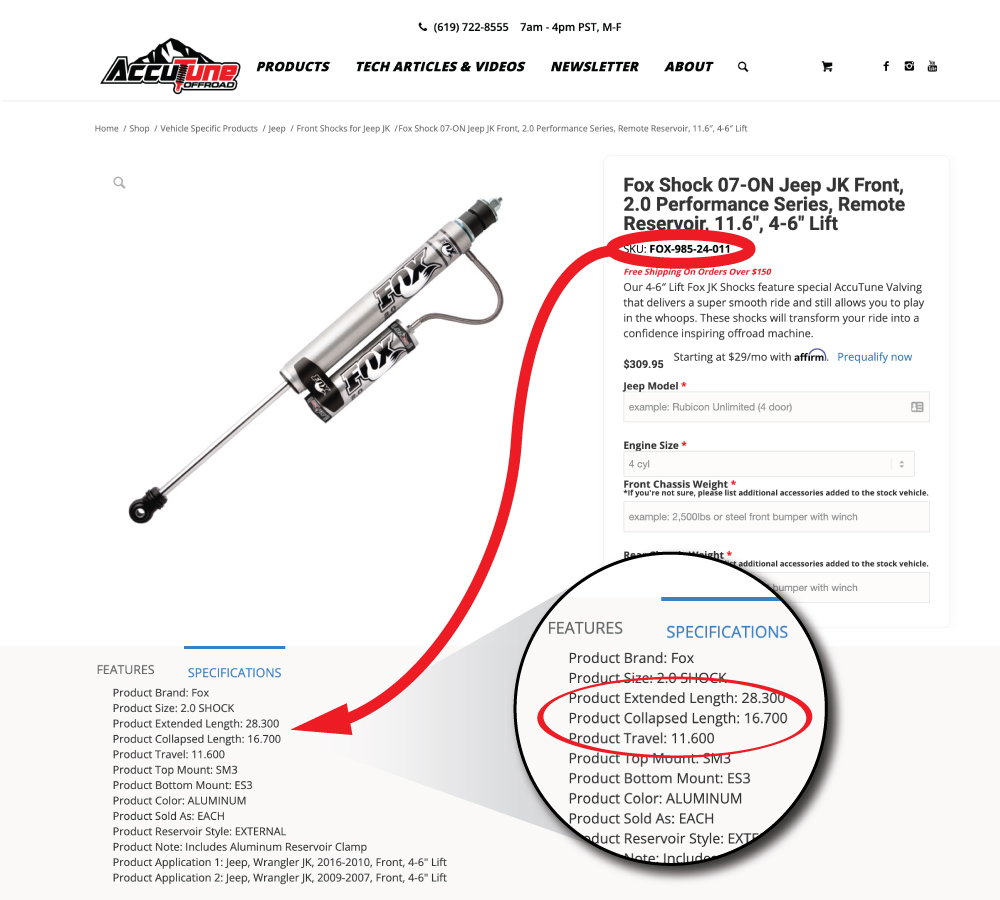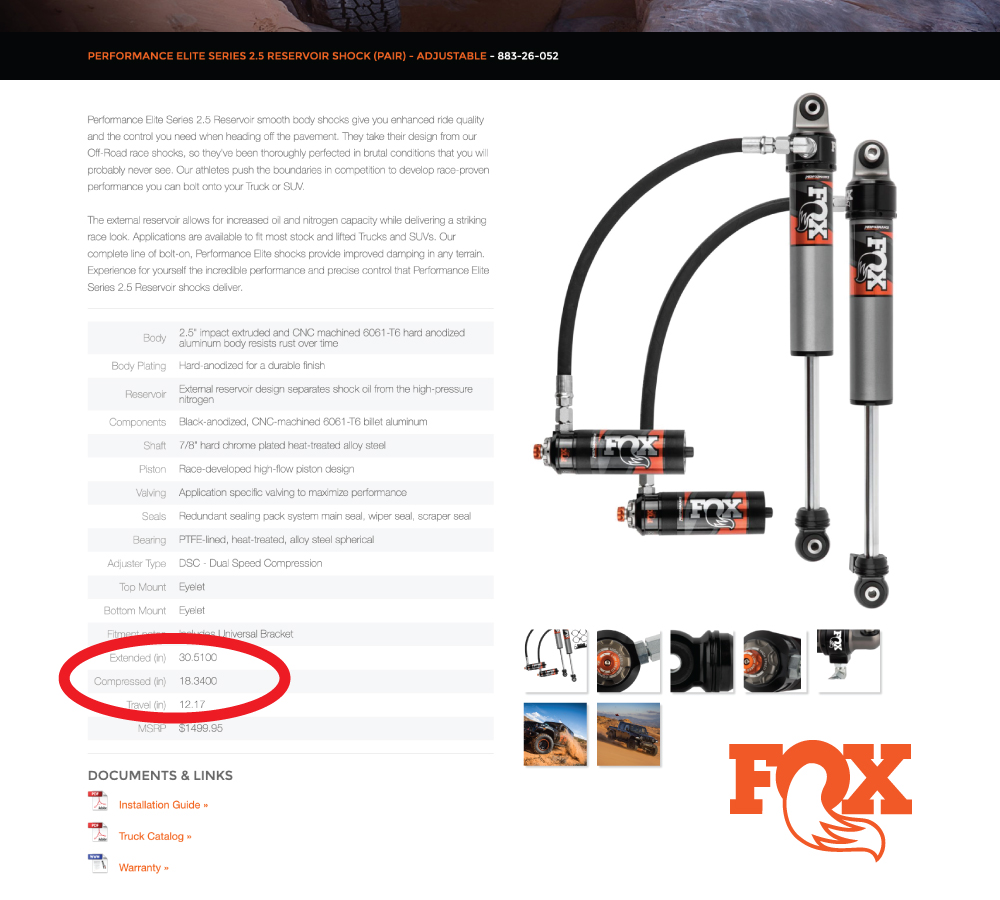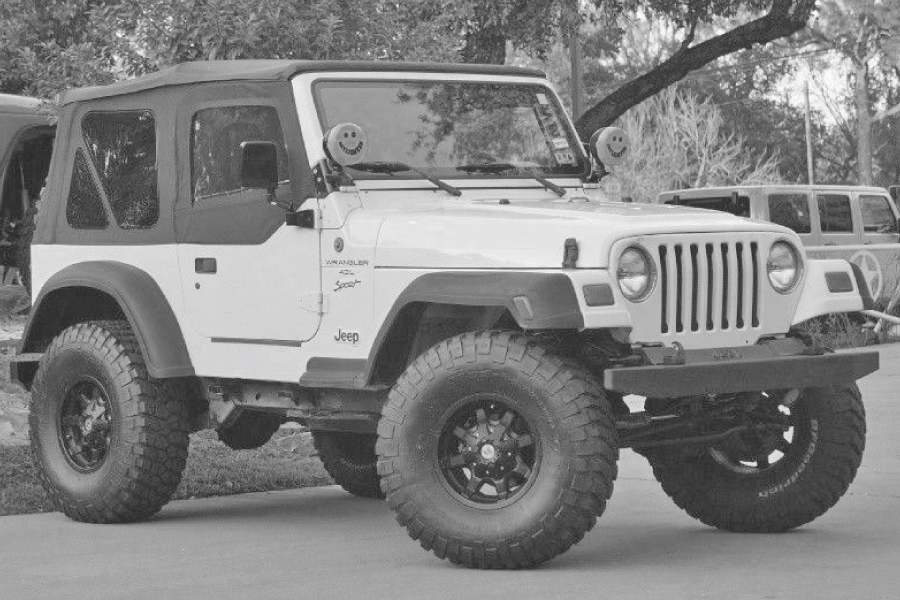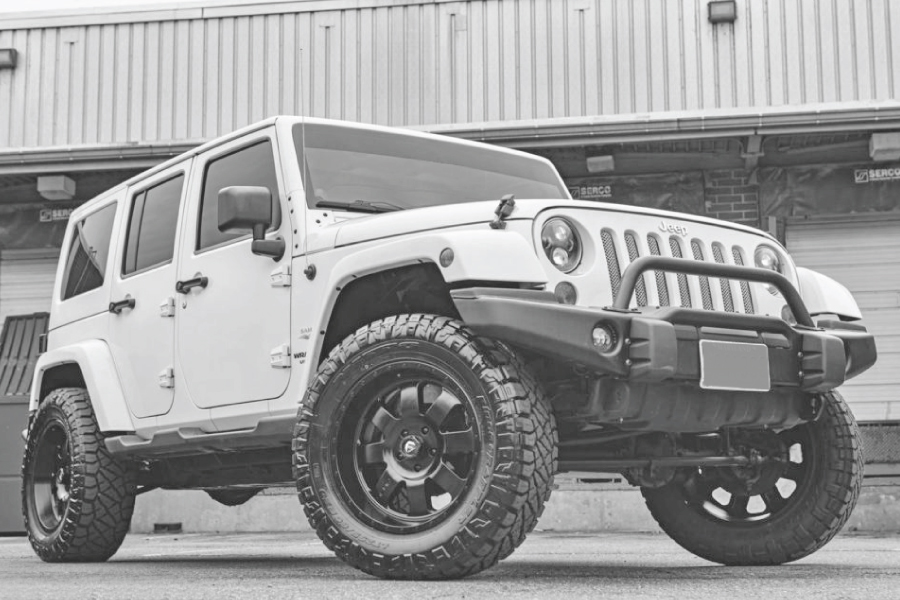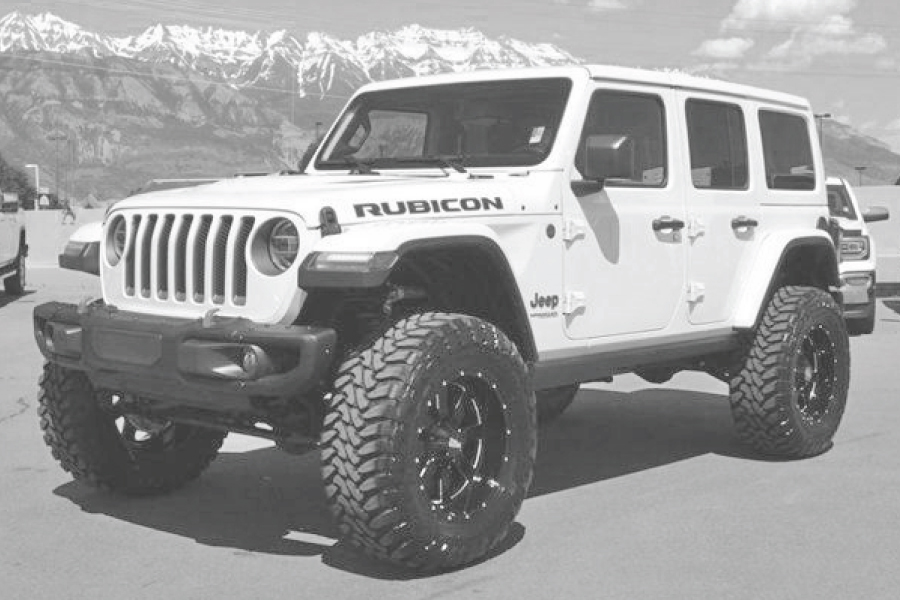HOW TO: Measure for replacement Jeep Shocks
November 15, 2022
Shopping for new Jeep Wrangler shocks? This guide will walk you through how to measure for the correct shock length on your Wrangler JL, JT, JK, TJ and more. Getting the right length shocks ensures your suspension delivers maximum performance and comfort both on and off-road. For the best Jeep ride quality, it’s essential to maintain plenty of up and down travel. Keep reading to learn how to properly measure Jeep Wrangler shocks and choose the right fit for your build.
Please Read Before Continuing
This guide is intended for Jeep owners who are:
-
Using OEM factory shock mounts (top & bottom, front & rear).
Note: This excludes shock relocation mounts and bar pin eliminators. -
Already running a lift kit with all the required components, but looking to upgrade or replace existing shocks for better performance.
-
Running the proper bump stop spacers with no tire clearance issues.
If you meet these conditions, you’re ready to move forward and learn how to correctly measure for new shocks on your Jeep Wrangler.
Measuring Shocks – Important Note
Shock manufacturers don’t always use the same method for measuring shock lengths. Below, we break down the proper way to measure Fox and King shocks with stem top mounts (commonly found on the front of Jeep TJ, XJ, LJ, and JK models).
Measuring Jeep Shocks
Measuring the compressed length of a shock is fairly straightforward, which we’ll outline below. Determining the extended length is a bit more involved, since you’ll need to check for potential binding points such as the driveshaft, sway bar, brake lines, and other components. It’s also critical to ensure your coil springs don’t come unseated at full droop (negative preload).
Keep in mind, running a shock that’s too long—especially with a short-arm suspension setup—can cause serious binding issues. While the idea of more travel may sound appealing, longer extended shocks aren’t always better.
Note: Some suspension and spring manufacturers provide recommended compressed and extended shock lengths. While these specs can be helpful, they may also limit your options unless you take measurements yourself. Always confirm whether additional requirements (like bump stop spacers or relocation brackets) are needed to match those recommendations.
How to Measure for Replacement Shocks
If your Jeep uses a stem top mount, please refer to the diagram above.
-
Set Ride Height
-
Park your Jeep on flat, level ground with normal weight loaded (fuel, gear, etc.).
-
Make sure it’s sitting at standard ride height.
-
-
Take Key Measurements
-
(A) Shock Length at Ride Height: Measure from center of shock bolt to center of shock bolt.
-
(B) Shaft Showing at Ride Height: Measure how much chrome shaft is visible. (Ignore the bumper; measure only the total chrome exposed outside of the shock.)
-
(C) Available Up Travel: Measure the gap between the bump stop cup and the bump pad on the axle.
-
-
Do the Math
-
A – B = Compressed Length of your shock.
-
C = Actual Up Travel Available ? This number should be ½” to 1” shorter than B.
-
-
Check Fitment
-
If (B) Shaft Showing at ride height is less than (C) Up Travel, you’ll either need:
-
Longer bump stop spacers, or
-
A shorter shock.
-
-
Finally, flex out the suspension to verify tire clearance and confirm whether a shorter shock will work with your setup.
-
How to Measure for Replacement Shocks
If your Jeep uses a stem top mount, please refer to the diagram above.
-
Set Ride Height
-
Park your Jeep on flat, level ground with normal weight loaded (fuel, gear, etc.).
-
Make sure it’s sitting at standard ride height.
-
-
Take Key Measurements
-
(A) Shock Length at Ride Height: Measure from center of shock bolt to center of shock bolt.
-
(B) Shaft Showing at Ride Height: Measure how much chrome shaft is visible. (Ignore the bumper; measure only the total chrome exposed outside of the shock.)
-
(C) Available Up Travel: Measure the gap between the bump stop cup and the bump pad on the axle.
-
-
Do the Math
-
A – B = Compressed Length of your shock.
-
C = Actual Up Travel Available ? This number should be ½” to 1” shorter than B.
-
-
Check Fitment
-
If (B) Shaft Showing at ride height is less than (C) Up Travel, you’ll either need:
-
Longer bump stop spacers, or
-
A shorter shock.
-
-
Finally, flex out the suspension to verify tire clearance and confirm whether a shorter shock will work with your setup.
-
With the right amount of up travel, your Jeep’s suspension can absorb bumps more effectively, delivering a smoother, more controlled ride both on and off the road.
Without sufficient up travel, your shocks won’t have the room they need to function properly, causing them to bottom out frequently on rough terrain. The result is a harsh, uncomfortable ride that can only be corrected by increasing available up travel.
Why is Up Travel Important?
When it comes to off-road performance, many Jeep owners put too much emphasis on droop and overlook the value of up travel. Droop is easier to achieve and works well for dedicated rock crawlers, but most Jeeps aren’t purpose-built crawlers—they’re trail rigs that benefit more from additional up travel.
Up travel is what allows your suspension to absorb bumps and rough terrain, especially at the faster speeds common on trails. Unlike competition crawlers that creep over obstacles, trail-driven Jeeps need suspension that can soak up chatter, rocks, and ruts for a smoother, more controlled ride.
More up travel also leads to balanced articulation. Without it, your tires bottom out quickly during flex, forcing the chassis to lift and raising your center of gravity. With proper up travel, the suspension moves more evenly, keeping your Jeep stable and predictable on uneven ground.
How Much Total Travel Should I Have?
Now that we’ve covered the importance of up travel, let’s talk about how it affects total suspension travel. There’s no single “perfect” number—total travel depends on your vehicle, lift height, and the shocks you choose. As a general guideline, aim for at least 4” of droop from ride height. For vehicles with less than 8” of total travel, a 50/50 split between up and down travel works well. Once you exceed 4” of up travel, it’s often beneficial to have slightly more droop than up travel—for example, 5” up and 6” down.
Picking Out Shocks
So you’ve determined the shock lengths you need—what’s next? Choosing the right shocks depends on your budget, your performance goals, and the setup of your vehicle. We have a detailed article comparing 2.0, 2.5, and 3.0 shocks, which can help you decide which size is best for your build.
A few things to keep in mind:
-
Shocks labeled for specific lift heights (e.g., 2–3.5” lift) can be helpful, but they’re not always accurate. Lift height can vary depending on your trim level (Sport, Rubicon, etc.), spring brand, and any added accessories.
-
Using your current setup and measurements, you should be able to find a shock that closely matches your needs. If nothing lines up perfectly, consider adding lift spacers or swapping to taller springs—but always keep your goals and available parts in mind.
-
Once you have your shock length measurements, it’s easier to narrow down options. Most Fox shocks list lengths in the Specifications tab on our website. If not, you can check Fox’s website. Some King shock lengths are on our site, though not all are listed, and keep in mind that Fox and King measure compressed and extended lengths differently.
Pro Tip: For the most precise measurements and maximum travel, remove your springs and fully cycle the suspension. This can help you fine-tune your setup and even trim minor components to gain extra up-travel.


